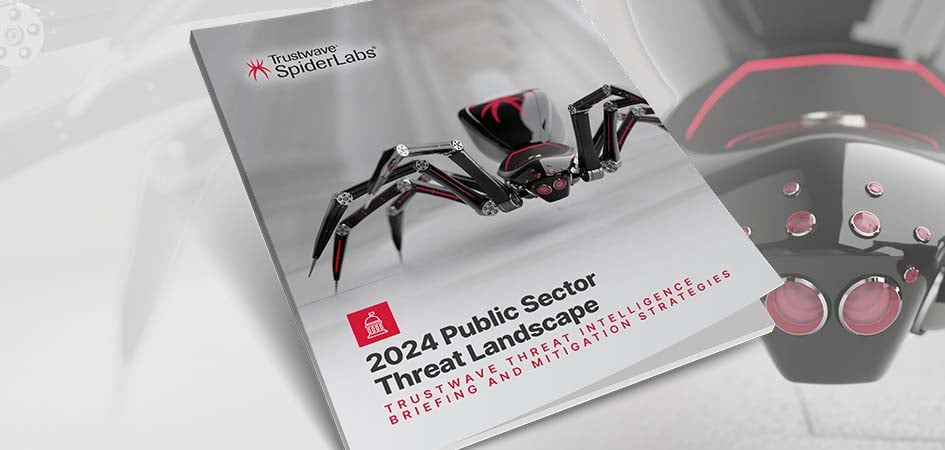Trustwave SpiderLabs’ latest report, the 2024 Public Sector Threat Landscape: Trustwave Threat Intelligence Briefing and Mitigation Strategies details the security issues facing public sector security teams as they try to strike a balance between supplying needed services and deploying the cybersecurity necessary to protect data placed in their charge.
The need for the highest level of security has never been greater. Wichita, Kansas in the US was recently struck by a ransomware attack that took many of its systems offline and critical infrastructure facilities like the Municipal Water Authority in Aliquippa, Penn. were attacked earlier this year.
The report was written with incidents like this in mind and covers the myriad of challenges local, state, federal agencies, and critical infrastructure operators must handle, along with actionable solutions to properly secure these vitally important organizations. Additionally, it breaks down the unique elements that separate the issues facing the public sector from their private industry counterparts.
The Danger
The effects of a cyberattack on the public sector can differ starkly from those targeting private corporations. Breaches can disrupt essential services that citizens rely on daily, from healthcare and social security to law enforcement and national defense.
Unlike an attack on a retailer that might delay shipments, successful public sector attacks can upset the very fabric of society and erode public confidence in government institutions, potentially hindering cooperation and creating a climate of fear and uncertainty.
Threat actors understand the important role these potential targets play in their society, but they are also aware of the potential rewards. Public agencies harbor large quantities of our personal information, and such data is high on any attacker’s list as it can be used for extortion purposes, sold on the Dark Web, or used for additional attacks.
Furthermore, successful cyberattacks on critical infrastructure, such as power grids or transportation systems, can have a ripple effect, causing widespread economic disruption, jeopardizing public safety, and even endangering lives.
Cybersecurity Issues Unique to the Public Sector
- Legacy and Diverse Systems: Public sector agencies often rely on outdated legacy systems that were built without modern cybersecurity threats in mind. These systems can be difficult and expensive to patch or upgrade, and many are managed by private entities with very little standardization, making them prime targets for exploitation.
- Focus on Public Service: In pursuit of public service, government agencies may prioritize accessibility and user convenience over stringent security measures. This pursuit can leave them vulnerable to phishing attacks or social engineering tactics that prey on unsuspecting employees.
- Fragmented IT Infrastructure: Public sector organizations can have complex and sprawling IT infrastructures with multiple departments and agencies using different systems. This fragmentation can create blind spots and make it difficult to implement consistent security policies across the board.
- Data Trove: Public sector agencies hold a massive amount of sensitive data on citizens, including Social Security numbers, financial information, and medical records. This data is highly valuable to cybercriminals who can use it for identity theft, financial fraud, or further cyberattacks.
- Siloed Information Stores: Public sector agencies have traditionally kept their own data. With a growing requirement to link and pool data, there is a risk of hidden connections being inadvertently exposed.
- Limited Budgetary Resources: Budgetary constraints often restrict public sector organizations' ability to invest in the latest cybersecurity technologies and skilled personnel. These financial issues leave them vulnerable to attacks that exploit known weaknesses.
- Regulatory Compliance: Public sector agencies are subject to a complex web of regulations governing data privacy and security. Balancing compliance with effective cybersecurity practices can be a challenge.
- International Focus: Foreign governments or state-sponsored actors engaged in espionage or cyberwarfare can target public sector networks. This adds another layer of complexity to the cybersecurity landscape.
The public sector report is just the latest in a series researched and published by Trustwave SpiderLabs. Please visit these for an in-depth analysis of the security issues facing each industrial sector.
Please download the 2024 Public Sector Threat Landscape: Trustwave Threat Intelligence Briefing and Mitigation Strategies for all the background details on these threats, the groups behind them, and how to properly defend your public sector entity.
